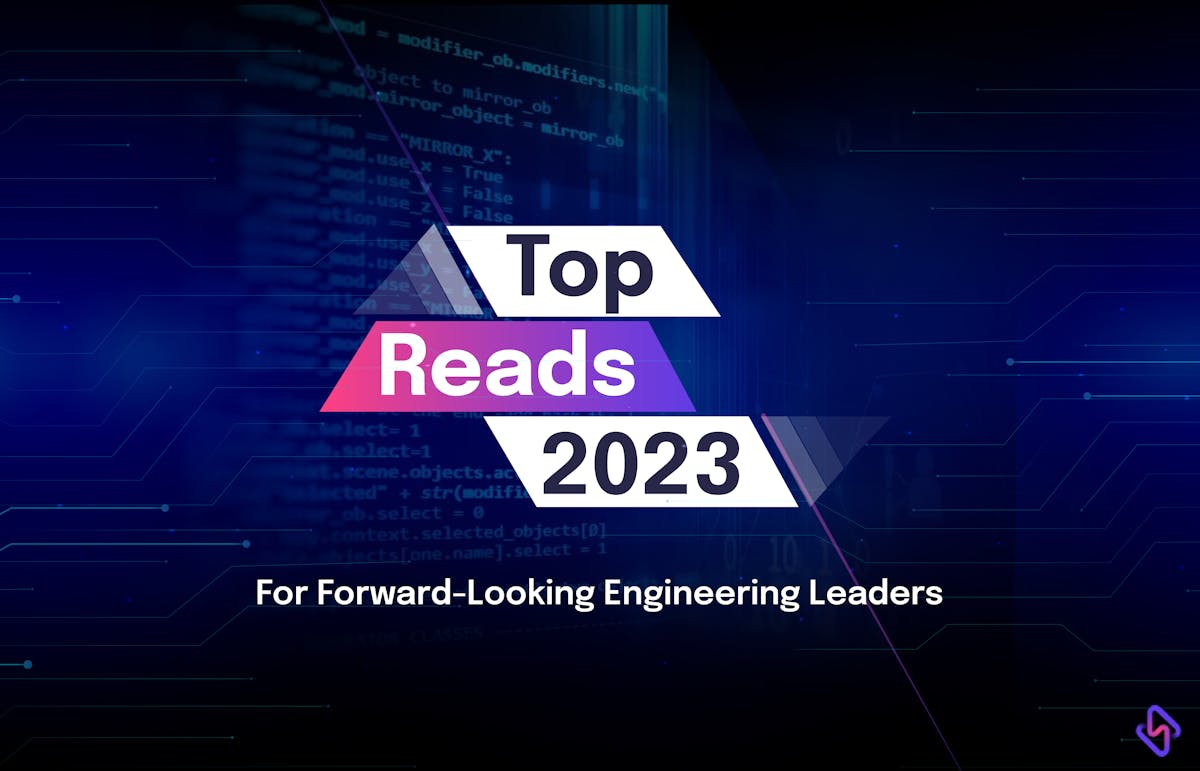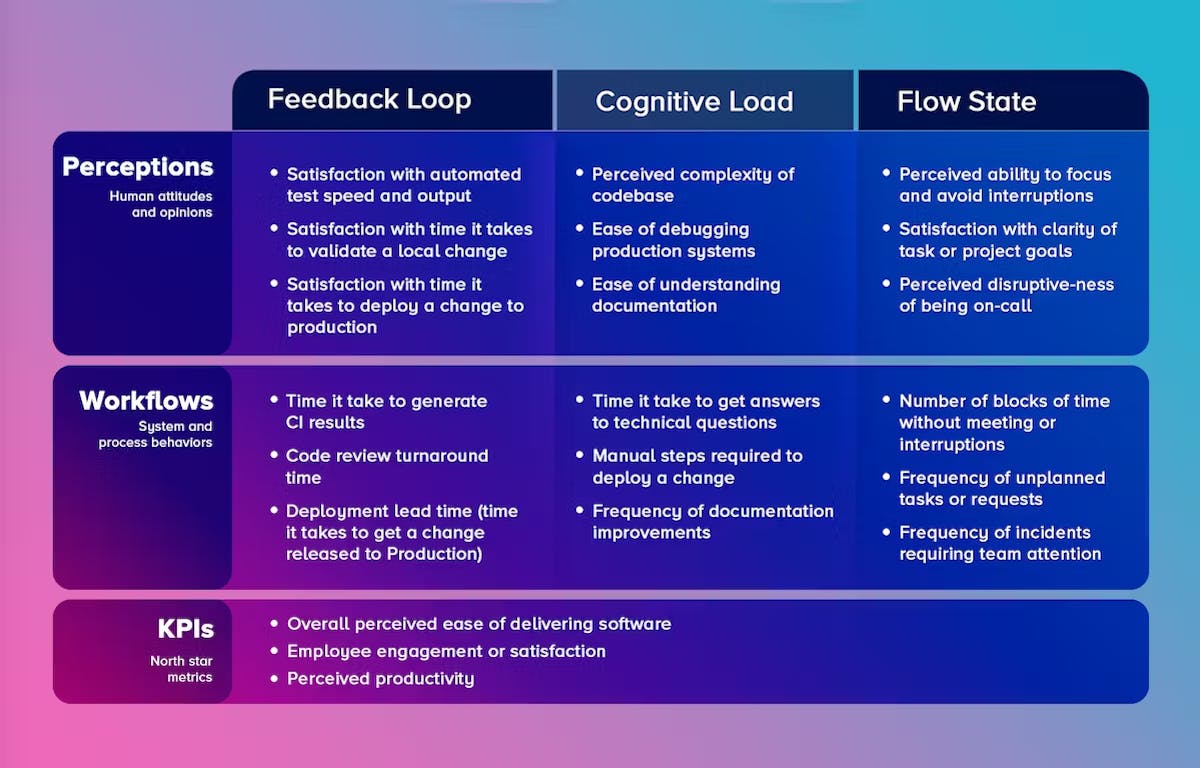Your engineering team can't scale at breakneck speed until you quantify technical debt. Over 60% of engineers agree, and see tech debt as the cause behind bugs, outages, and slows down the development process.
Technical debt needs to be tamed. And engineering teams globally are doing so, either through metric-driven engineering, deploying agile methodologies, or investing in their DevOps infrastructure. Airbnb implemented a "code health score" system, identifying and prioritizing debt repayment efforts. The result– 20% reduction in code complexity.
So how do you slay technical debt in your own organization? Tune in to learn how to identify, and tackle technical debt hotspots– metrics, code reviews, and developer feedback, prioritize repayment, build a culture of code health.
4. 10 Engineering Manager Challenges and How to Overcome Them
What differentiates between a good engineering manager, and a great engineering manager? It’s not about delivering on deadlines time, and again, or accelerating development velocity as and when the business needs demand, but it’s something more vital.
Good managers delegate tasks. Great managers delegate opportunities. Good managers shape skills, great managers shape your ability to innovate.
What sets them apart is their ability to cut through never-ending challenges, uneven demands from business teams, and a hectic engineering schedule. From burnout, to low workflow visibility, and the pressure to manage growth without limited resources.
5. Top 10 Engineering KPIs Technical Leaders Should Know
As Zig Zagler says: What gets measured, gets improved. It’s true for engineering teams as well. KPIs help the leadership to understand how their team is moving forward using data-backed metrics.
Read on to find tactical KPIs to streamline your engineering processes, understand roadblocks using data-driven indicators, and optimize your workflow.
6. 11 Slides CTOs Must Present In Their Next Board Meeting
Board meetings could be a little tricky for CTOs, especially when you stand shoulder to shoulder with your CEO to help the board understand how aligned is engineering to the business: In short, how the engineering efforts impact the overall bottom line.
The idea is to paint your big picture, detail the future proofing strategies and how you are ahead of the curve, highlight risks, and capture the progress made by your team in the month/quarter/year. To do so, data, context, and metrics are your meeting companions.
Having said that, tap to read, and find the slides to include in your CTO presentation deck for the board meeting– From performance metrics like deployment, and response time, to team KPIs, and metrics to capture market dynamics– this playbook has it all!
7. Sprint Retros With Hatica: Actionable, Real-Time Insights For Engineering Teams
Imagine transforming your sprint retros from vague discussions that your developers mostly hate, and skip to data-driven action plans that sets up your next sprint cycle for success in advance.
Engineering teams are most vulnerable to fall prey to the domino effect. One sprint goes wrong, and your deadlines are haywire, market opportunities are missed, the competitors might start taking an advantage, and the engagement too nosedives faster than your phone battery.
Companies that adopt Agile to the core are 60% faster! An effective sprint retro isn’t just a luxury anymore for a necessity for engineering teams to move fast, and deliver faster (and big free).
Actionable data is again at your rescue here. One of our customers improved their project velocity by 2.2x after deploying a sprint retro dashboard for their team. That’s the power of actionable data, and a cohesive engineering team (and an engineering analytics platform in your arsenal)!
Read here about Sprint Retros With Hatica.
8. Demystifying R&D Cost Capitalization For Engineering Team
Engineering and finance departments walk on a thin rope in an organization. Engineering teams need extensive resources to build the future, while finance teams are looking to protect the bottom line.
Development expenses, such as salaries, tools, infrastructure, the pressure to have a faster release cycle, and the ongoing talent war for skilled software engineers have inflated the cost basket of engineering. Imagine finance teams breaking into a cold sweat by just imagining the financial rollercoaster.
This is where cost capitalization comes in, to help both teams work together, and convert expenses into strategic assets. Navigate fiscal strategy with innovation, and boost your engineering ROI.
Boost stakeholder confidence, put a check on your TCO, and empower your team to drive sustainable, long-term growth using cost capitalization: R&D Cost Capitalization For Engineering Teams.
PS: Wondering how to achieve automated, and an auditable cost capitalization process for your engineering team? Ditch the spreadsheets, and use Hatica as your one-stop shop for automated, and auditable cost capitalization.
9. Hatica: Your Engineering Team’s Copilot To Fight Meeting Creep
How many meetings are too many meetings?
Globally, engineering teams are losing $37 billion (yup, billion with a B) annually on unproductive meetings. And we are not yet counting the opportunity cost, and the cost of developer toil here!
Even big industry giants like Shopify felt the tremors of unproductive, back to back meetings a few years ago. The company took the radical way, and culled 320,000 hours of meetings. Slack too declared calendar bankruptcy for a while so their engineers have enough deep work hours to focus on their core tasks.
However it's not all just dust and gloom. As like for everything else, data is the way out here.
There are a few things we take pride in, and humbly brag about. Helping engineering teams fight meeting creep is one of them.
Use data-driven insights to make meetings more meaningful, turn them into productivity powerhouses, track, and reduce manhours wasted in meetings, and help your engineering team reclaim their maker time so they can do what they love the most: code, grow, and innovate.
From async standups with Hatica check-ins to running data-informed 1:1s with your devs– we have got you covered.
See how we challenged the meeting status quo, realized the productivity killer that inefficient meetings are, and data-backed ways to tackle meeting madness with Hatica.
10. What is Software Development Velocity and How to Improve it?
Think of development velocity as your rocket fuel – the faster you go, the farther you soar towards a healthy bottom line.
Low development velocity is a common roadblock for teams, given the complexity, and sheer size of a typical SDLC process. But it doesn't have to be a permanent detour.
Siloed processes, tribal knowledge, lack of automation and metric-driven engineering can clog your development pipeline, making the team slower, while they rush to fulfill the deadline.
Here is a short read about causes behind velocity slowdown in engineering teams, and find your roadmap to velocity nirvana: What is Software Development Velocity and How to Improve it?
11. From Engineer to Leader: The Journey of Becoming a CTO
For engineers, the climb to CTO demands a shift– they aren’t just individual contributors anymore; they work at the intersection of business growth, and technology as a driver.
Here is a 2000-word deep-dive into what it takes to ascend the ladder from a developer to managerial positions, and then finally a CTO. Tap and read to find more about how the role transitions, responsibilities change, the skills required to become a CTO, and what early steps can be taken to ensure a seat at the C-sec table.
12. DevEx Framework: A 3D Metric Approach to Productivity & Engineering Effectiveness
We obsess over lines of code [LOC], and Jira tickets. But are these metrics truly capturing the essence of engineering effectiveness? The pandemic and global shutdown changed the digital landscape, even pushing engineering leaders to recalibrate how they measure, think, and improve engineering productivity.
Enter developer experience in the picture. Today, 58% of engineering leaders emphasize that developer experience holds a "very" or "extremely" critical position. Another 42% tagged developer experience as the key factor to adopt IDPs, and CI/CD tools.
As DX takes center stage in helping developers reach their maximum work potential, and drive engineering excellence.
The brains behind the SPACE framework have once again teamed up to build The DevEx Framework– a paradigm shift in how dev success is measured: from chasing metrics to focusing on building a thriving engineering culture.
Here is a 10k feet view of DevEx framework to spot areas of improvement:





